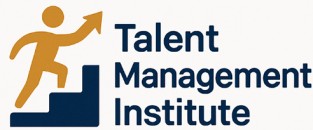
Understanding the Core of Leadership Training
Building a Foundation: Leadership Training Demystified
Understanding the essence of leadership training is crucial for anyone interested in maximizing the full potential of emerging leaders within an organization. This field is more than just about teaching people how to manage teams or handle crises. It's about nurturing growth, honing leadership skills, and preparing individuals to confront an ever-changing business landscape. Effective leadership training focuses more on developing skills than simply imparting knowledge. This encompasses a thorough exploration of soft skills like emotional intelligence and communication, as these are vital for leaders to connect with teams and nurture an inclusive environment. Moreover, it involves refining technical competencies to help leaders offer innovative solutions and drive organizational success. In today's fast-paced world, leadership development programs are increasingly adopting a holistic approach. They recognize that comprehensive training must cater to various learning preferences. Whether through live online sessions, on-the-job coaching, or more structured programs, different formats will help accommodate diverse learners. By engaging in such a dynamic process, organizations can equip their high potential individuals with the necessary tools to reach their full potential. Find out more about the art of leading people to gain insights into different strategies that bolster leadership capacity. Furthermore, leadership training sets the stage for talent management strategies by ensuring a robust pipeline of qualified professionals poised to ascend to executive leadership positions. As organizations strive for sustainable growth, investing in leadership development not only boosts individual performance but also reinforces the overall leadership team. Live immersive training practices offer participants a chance to blend theory with practice, bolstering their ability to effect change and inspire their teams effectively. When done correctly, leadership programs can transform capable individuals into empathetic and influential leaders who can drive meaningful business outcomes.The Role of Leadership Training in Talent Management
Leadership Training: A Vital Asset in Talent Management
Organizations are constantly seeking ways to cultivate and retain top talent, and leadership training stands out as a pivotal component in this endeavor. By enhancing leadership potential, businesses not only foster professional development amongst their leaders and teams but also drive overall organizational success. When a robust leadership training program is implemented, it serves multiple purposes within talent management.
The core idea revolves around equipping individuals with the necessary skills to elevate their performance and that of their teams. Leadership programs are designed to help emerging and current leaders identify and harness their full potential, guiding them to become effective leaders who can inspire and drive change across different levels of the organization. Moreover, empowering your workforce for success through these programs ensures that the organization is prepared to tackle future challenges.
One of the significant roles of leadership training in talent management is the cultivation of key skills necessary for leaders to thrive. This training often includes a variety of modules such as emotional intelligence, coaching techniques, strategic planning, and communication skills. All of these enhance a leader’s ability to manage teams effectively and adjust to the evolving demands of the business environment.
Leadership training also plays an integral role in preparing teams for transitions and organizational changes. By guiding leaders through experiential learning and live online sessions, they gain the confidence and capability to navigate complex scenarios, fostering a culture of resilience and adaptability within their teams. Consequently, this bolsters the overall leadership capacity of the organization, ensuring that both individuals and their teams are prepared for growth and advancement.
Effective leadership programs contribute significantly to identifying high potential employees and equipping them with the expertise required for executive education levels. These programs thereby act as a bridge, facilitating the progression of talented individuals to higher, more impactful roles within the organization.
In essence, leadership training is an indispensable element of talent management, providing organizations with a structured pathway to develop leaders who are not only skillful but also adept at fostering a collaborative and thriving workplace. With a focus on professional growth, these programs will help build a future-ready leadership team capable of steering the organization towards success.
Key Components of Effective Leadership Training Programs
Elements that Define Successful Leadership Development
To fully realize the potential of leadership training, it’s essential that the key elements of leadership programs are carefully curated and aligned with organizational goals. Leadership development should be seen as a holistic approach consisting of several integral components designed to nurture the skills and capabilities of potential leaders.- Customized Learning Paths: Tailoring programs to the specific needs of the organization and the individual leader ensures relevance and maximizes the benefits of training. This includes adapting to specific industry challenges or unique business objectives.
- Experiential Learning and Workshops: Hands-on learning exercises such as workshops and simulations provide real-world experience that enhances the theoretical knowledge acquired during training. Role plays and case studies are effective methods to instill practical leadership skills.
- Coaching and Mentoring: Access to seasoned mentors and coaches helps develop personalized growth strategies. Through one-on-one sessions, leaders gain insights from experienced professionals, which can significantly accelerate their development journey.
- Fostering Emotional Intelligence: Effective leadership is not just about strategic execution but also about emotional intelligence. Programs aim to enhance leaders' abilities to manage their emotions and connect positively with their teams.
- Live Online Training: Leveraging technology such as live online programs helps accommodate team members from diverse geographical locations, ensuring that everyone receives the same high-quality instruction.
- Regular Evaluations and Feedback: Clearly defined metrics and ongoing feedback loops are essential to gauge progress and refine program components where necessary. This will help maintain the efficacy and relevance of the leadership program.
Measuring the Impact of Leadership Training
Evaluating Training Success and Influence
Measuring the impact of leadership training is pivotal in assessing how well the programs nurture and bolster leadership potential. Organizations can pinpoint the most effective strategies by evaluating several components that contribute to this growth.- Feedback and Surveys: Collecting direct feedback from participants and team members is a crucial component. These insights can reveal how the training resonates with attendees, providing pathways for continuous improvement.
- Tracking Key Performance Indicators (KPIs): Establish clear benchmarks before implementing leadership programs. Comparing these metrics pre- and post-training offers measurable evidence of success. Metrics can cover aspects such as increased team productivity, better decision-making abilities, and enhanced emotional intelligence.
- Behavioral Changes: Observing changes in behavior and leadership capacity is essential. This may involve assessing how newly acquired skills affect team dynamics, executive leadership quality, and day-to-day business operations.
- Long-term Success Analysis: A comprehensive evaluation requires examining the long-term development of leadership skills. A longitudinal study of leadership potential as it transitions to actual output can help determine the effectiveness of training programs.
- Return on Investment (ROI): The ultimate goal is to ensure the investment in training yields tangible benefits. Regularly gauging ROI helps teams and organizations justify the resources allocated to leadership programs.
Overcoming Challenges in Leadership Development
Addressing Common Barriers in Leadership Growth
In the pursuit of nurturing leadership potential within an organization, facing challenges is inevitable. It's crucial for companies to understand and address these roadblocks effectively to ensure their leadership training programs achieve their desired impact.
Resistance to Change
Leaders and team members alike may sometimes resist change, even when it's in an organization's best interest. Understanding the emotional intelligence aspect and how it plays a vital role can help minimize this resistance. A well-structured coaching program can facilitate this change by encouraging openness and adaptability among all levels of leaders.
Limited Resources and Accessibility
- Time constraints can hinder potential leaders from participating fully in development initiatives.
- The costs associated with leadership programs might deter organizations from investing.
- Implementing live online training options can help organizations maintain accessibility while ensuring all team members gain full access to leadership training opportunities.
Alignment with Business Goals
Ensuring the alignments of leadership programs with broader business goals is another challenge. Programs should reflect the organization's strategic direction, which will help participants understand the relevance of their leadership skills development in the business context.
Measuring Success Effectively
Finally, measuring the impact of leadership development can be challenging. It's vital to establish clear metrics that reflect both quantitative and qualitative data. Regular feedback from participants can further clarify whether the intended leadership potential is being realized and how the program influences overall team dynamics. Many organizations find that setting clear, actionable objectives can lead to more tangible outcomes and more effective leadership within teams.
Navigating these challenges in leadership growth is essential. It not only ensures the success of a leadership training program but also aids in capitalizing on the full potential of future leaders within the organization.













